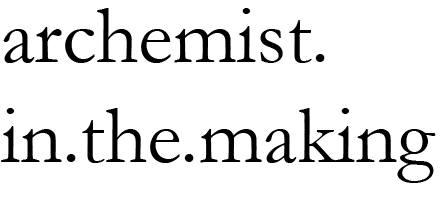Customisation of design can arguably arise from our habit of searching for the aesthetic in visual as well as the attitudes of wanting to follow the trend yet with discretion and dignity. This is similar to the idea of purchasing counterfeit goods we often see in the markets – it is giving the people a sense of belonging and confidence now that they have owned a part of the trend.
Read MoreDemocratising in Design Part I : A Code’s Accessibility, Implications and Precautions
This morning, I came across Dezeen’s article on Wallgren Arkitekter and BOX Bygg’s upcoming Grasshopper plugin Finch - a “parametric tool that generates adaptive plans”. Finch essentially is a plugin that, by inputting information about the size of land coupled with building regulations, it will be able to generate a range of generic plans. This is quite exciting for many of us, considering that should we study hard on the standard building codes and restrictions, it will give us time to understand and practice the means to create a habitable design. This is also beneficial in terms of research, given that if we input codes from different generations, we are then able to make immediate comparisons on the evolution of housing designs in accordance to the types of regulations that they have been coded with.
Read MoreArchitecture for the Homesick 101: We need to talk about your grandparents.
The aging population and how we cater for the aging population is something I question and challenge frequently, especially when knowing how to cater to their physicality as well as mentality. From understanding their level comfort of how far they could walk, how many stairs they could climb, and knowing what materials would be the safest for them to use or touch is challenging however, I feel is rarely talked about. For me personally, is how do you create an environment for individuals to feel that they could still have their sense of pride and acknowledgement of independence?
Read MoreArchitecture for the Homesick 101 : Making most of what they've got
I remember feeling so embarrassed when my tutor noted that our architectural scheme in response to the Sharing Economy resembled the lifestyle of Domestic Workers in Asia (Hong Kong, Singapore, Malaysia, Philippines, Indonesia, etc.). My friend and I were determined to give a bleak and dystopic scenario marketed almost like a sunny paradise: the more you work for the family, the better your living conditions will be.
Read MoreArchitecture for the Homesick 101: Are You Sure You Need A Kitchen or a Laundry?
Last year. during our studio class (Studio Shared) - our group’s assignment challenged the ownership of a house - how much one should have or want to possess. Essentially, it was very much like an IKEA catalogue of pick and choose the elements for your house considering that your necessities such as a bathroom, communal kitchen, toilet or laundry were highly accessible as it was a foreseeable trend of the future. Albeit, despite having these facilities available publicly, our house still retained the nuclear house: a kitchen, a sink, a bed and plenty of storage. It was also very reminiscent of my other studio project I did during first year with my partner, where we also designed another IKEA flat pack type design that offered residents to build cells of what they would like to have in their own home should their area become flooded.
Read More"But my dear, it's not always about the money"
I'm sure many avid Dezeen readers, architecture colleagues and my friends are aware of the hot topic that has exploded recently. After the news of Junya Ishigami's recently commissioned Serpentine Pavilion, where he is obligated to pay those who are involved with the project due to his unpaid internships. The news was immediately followed by another article condemning firms that provide unpaid internship shouldn't be commissioned by high profile galleries.
Read MoreExpectation vs. Reality III: When the Love Letter Becomes Unwanted
Over tacos and being miserable with the realisation how lacking we were in trivial knowledge from Trivial Pursuit, my friends and I were discussing about taking aesthetic photos for dating apps. While the idea was a mere banter, the ideas that kept sprouting were evidently inspired from our constant scrolling down the square images that constantly pop up on Instagram. These photos were often captured through a process of dreamy filters, correct ‘candid’ poses and exceptional cropping that gives us the final aesthetic. However, we must also remember that it is the kind of backdrop and setup that allows us to achieve the ‘Instagram Worthy’ photo – and these backdrops that are often discovered accidentally and later becoming the popular backdrop for others can become a love letter to our surroundings.
Read More




